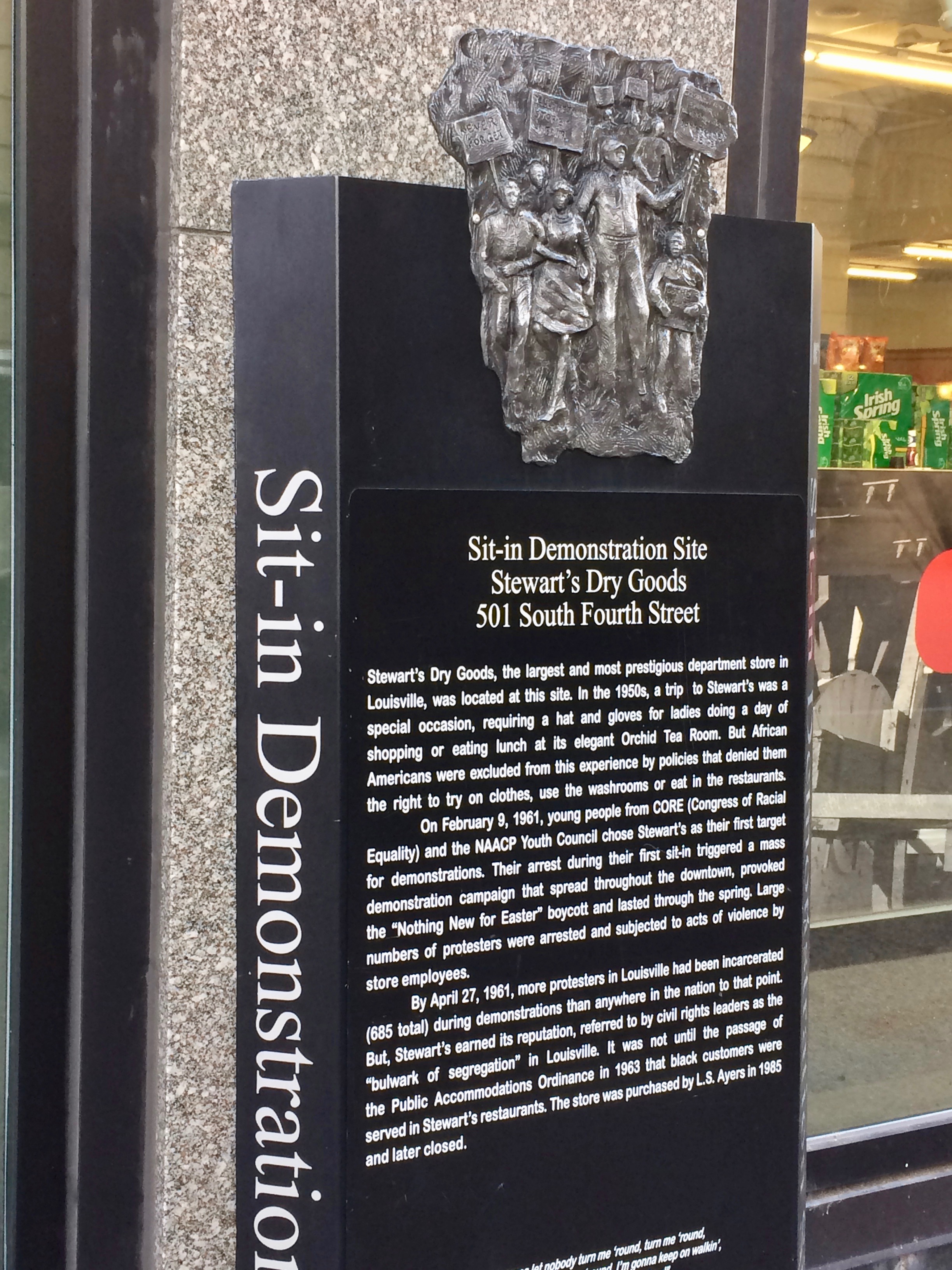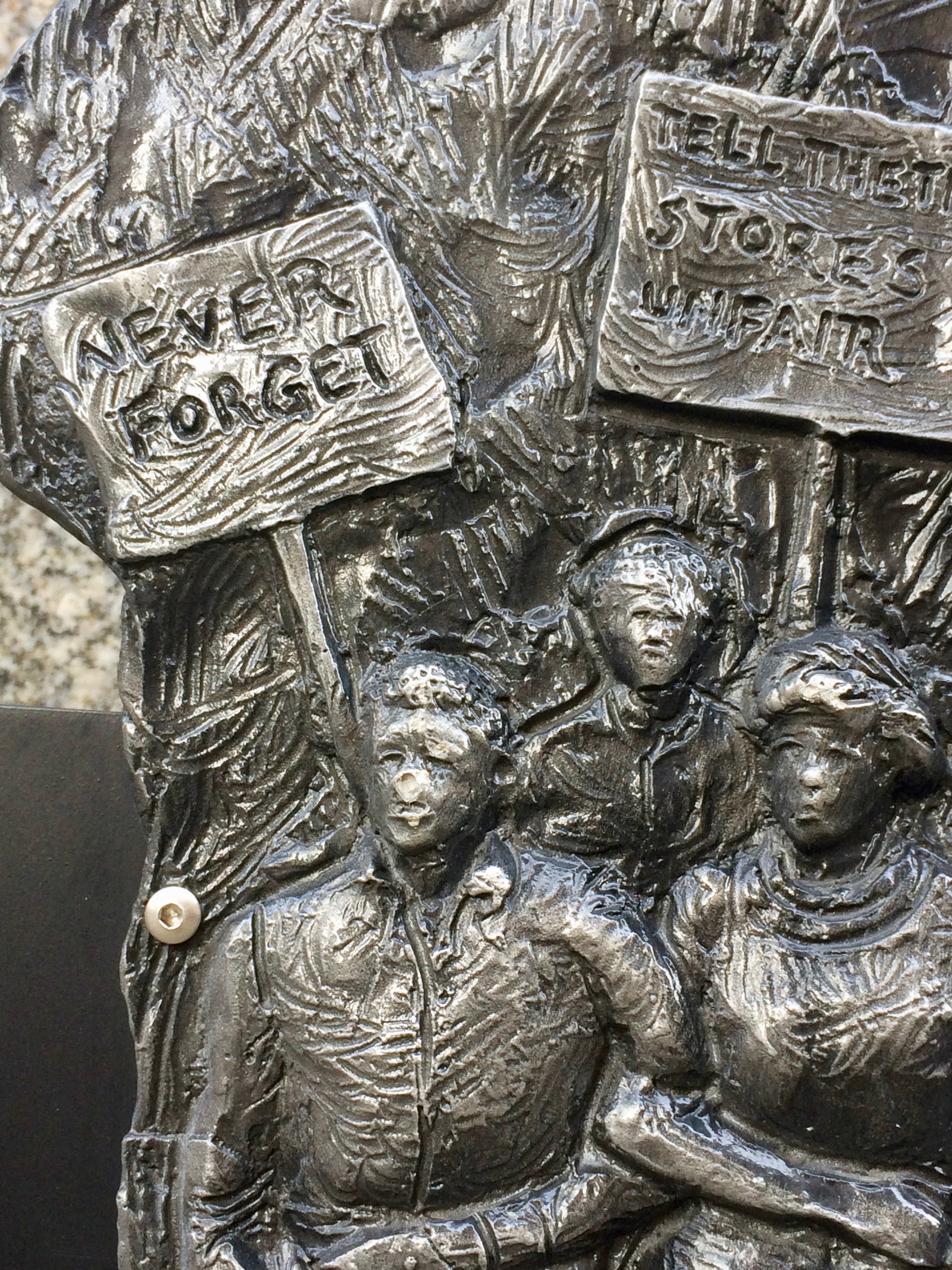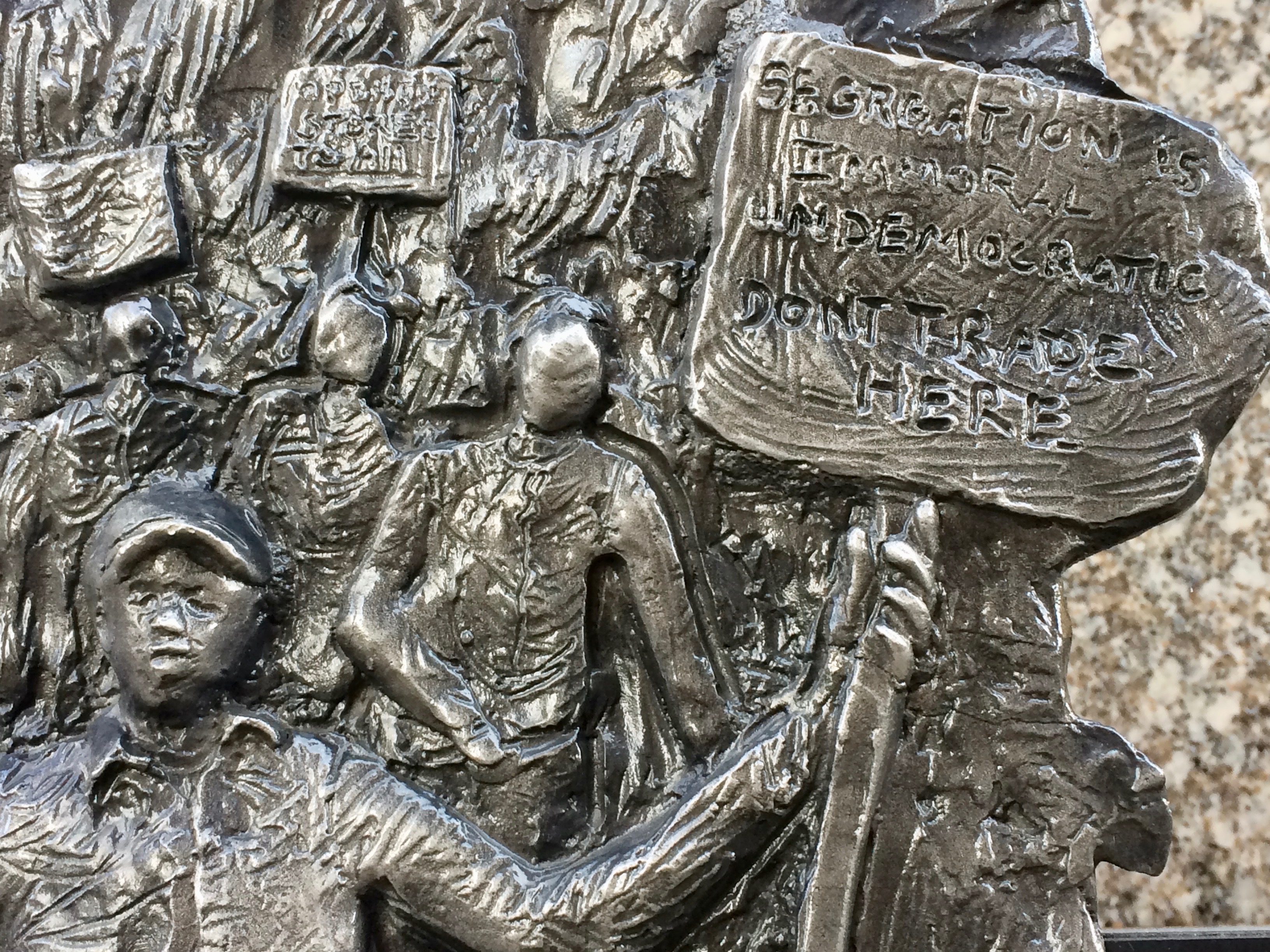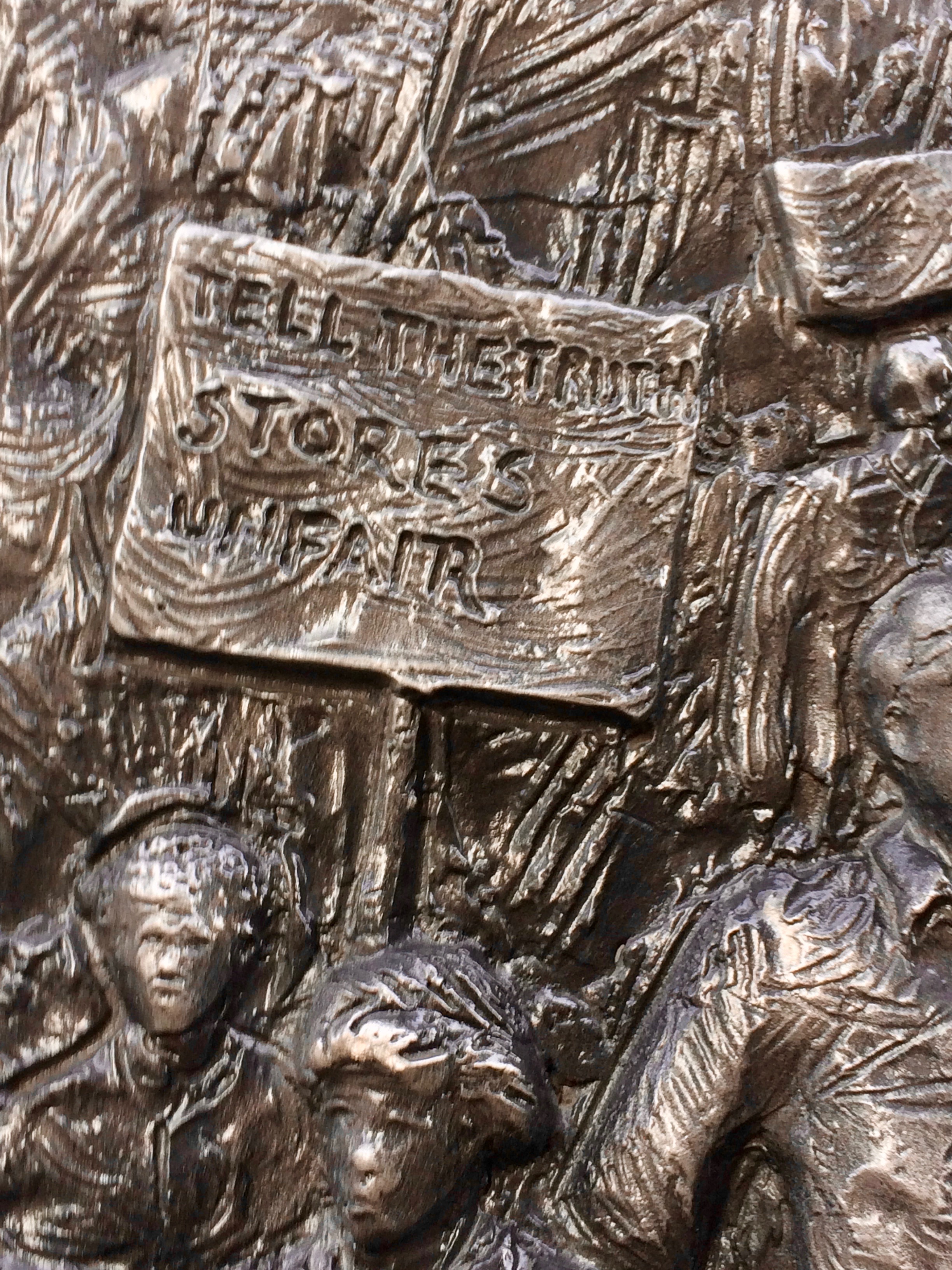Afterword
The theme of this volume—Making Future Matters—could not be more timely and important because it challenges us to think about the impact and consequences of our work. In her chapter, Mary P. Sheridan illustrates why our words and actions matter so very much. Offering the example of the Digital Media Academy (DMA), Sheridan describes how, together with graduate students, she developed a summer program for rising middle-school girls from primarily underserved schools. These girls learn to become active participants and shapers of the world around them while engaging in a number of fun, fascinating projects. Importantly, Sheridan gives the girls creative control over their projects, inviting them to take on roles as writers, producers, choreographers, directors, field researchers, web-designers and more. Articulating and inhabiting these roles provides an important avenue for the girls to imagine possible futures. Moreover, the location of the DMA on the University of Louisville campus is critical. By spending time on campus, the girls can project themselves as future college students. Finally, the girls have the opportunity to present their projects to a diverse audience—family and friends, community members, university students and faculty—an opportunity that supports their sense of agency, validates their ideas and work, and creates a space for their voices to be heard.
Hopeful Times
Sheridan creates conditions for hopeful times by asking the DMA girls to become astute readers of visual representations, including those of professional women. In one exercise, for instance, Sheridan invites girls to google images of veterinarians and examine these images for who is included and who might be missing. Not surprisingly, most images are of women, but few, if any, include African American women. This exercise invites girls to notice deeply ingrained assumptions about professional roles and identity categories. On a recent trip, I too experienced a similar moment of insight and dissonance when I saw the pilot of our plane pull up to the gate—an African American woman. My embodied response—surprise, pleasure, and dissonance—brought home the importance of seeing professional role models in the world, such as the pilot of my plane, a bold, fearless woman of color challenging professional roles and expectations. Or consider the media attention received by the female pilot who safely landed a Southwest flight with a single working engine and a hole in the fuselage: the media kept praising this pilot for keeping her cool—despite being a woman. I take such encounters as signs of hopeful times, steps in a long journey toward a more just, equitable society.
Troubling Times
At the same time, I realize that we live in deeply troubling times. In 2018 many pieces of civil rights legislation are under attack. The #MeToo hashtag is drawing attention to continued sexual harassment and flagrant abuses of power. The Southern Poverty Law Center is tracking and mapping the dramatic increase of hate speech and hate crimes across the country. Growing xenophobia and anti-immigrant sentiments are shaping immigration policies and threatening a generation of Dreamers who now live in fear of deportation to countries they have never known. Gun violence and school shootings haunt every city and state in the nation. The contributors to this volume wrestle vigorously with troubling times, exploring how we can employ digital methods to make our work matter. They challenge us to ask: how do we move forward with courage? With heart? With determination? With consequence and impact? How do we respond to encounters with violent rhetoric, knowing full well that such rhetoric can easily turn into material violence—physical, psychological, emotional, and environmental?
Contributors to this collection suggest bold avenues for how we might move forward. Particularly impressive is the fact that the authors engage in personal, deeply moving ways with their subject matter, revealing their own vulnerability and lived experiences. Writers set out to destabilize familiar notions of race, identity, ability, citizenship, nationality, temporality, space, and ethics. They push important ethical and intellectual boundaries, insisting that words matter in the world and that our relationship to the world is material, complex, entangled, and embodied.
In the paragraphs above, I chose to write about hopeful and troubling times in sequential order. Given more time, I might have chosen to set up two parallel entry points for readers, allowing them to choose which section to read first. Digital environments allow us to create such parallel narratives, as Jaclyn Hilberg discusses, a process that can “reveal the simultaneity” of contradictory narratives. The affordances of digital spaces clearly offer new possibilities for story-telling, visual representations, interaction, response, engagement and much more. How to best use these affordances remains a rich territory for future research. Does offering multiple entry points into a webtext, as Hilberg explores and Yergeau enacts, enrich the experiences of readers or does it create confusion, perhaps even resistance or resentment, because the reader suddenly has to make many more executive decisions when navigating the digital environment?
Engaging the Material World
The writers in this volume also challenge us to queer notions of what is normal (and what is not) as Melanie Yergeau illustrates effectively when she challenges us to rethink the spectrum of neurodiversity human beings inhabit, and as Paul Prior demonstrates when he reflects on the rich spaces of community, culture, and family life, on the “becoming, growing, transformation” that unfolds from moment-to-moment in the informal contexts of learning and life. Octavio Pimentel challenges us to understand the need for action—and giving up privilege—with the powerful visual images and sounds he employs in his introduction and with his call for using the manifesto as a powerful rhetorical tool. Steve Parks reminds us of the gruesome human rights violations in the ongoing Syrian war and describes his own contribution as a committed activist. Laurie Gries sounds an alarm as she counts, catalogs, and maps the growing hate speech, hate symbols, and hate crimes that have emerged in the form of swastika graffiti. Drawing on the Southern Poverty Law Center's research, she creates visual images, maps, and graphs that amplify the resurfacing of swastikas across different institutions and locations in the United States. Gries’s work directs attention to the power of visual rhetoric as a call to action. Together, these writer-activists remind us that words and language have material consequences and that digital tools and methods might afford us new opportunities to act with impact and consequence.
How do we write about such violent times without traumatizing readers, researchers, or members of the communities we are studying? Michelle Day explores this question and suggests that we have much to learn from “trauma-informed research methods” in the literature of social work. Day argues that “safety and ethics” are paramount, that we need to be mindful of the vulnerability of those who engage with our research and guard against “compassion fatigue.” Day’s interesting discussion led me to reflect on the trigger warnings that now open three of the essays in this collection. The pop-up boxes have the feel and quality of a movie rating, advising viewers to use their own discretion, yet they seem to function in a very different way. If, for example, I decided to shield myself against the violence/trauma discussed by Pimentel, Gries, and Parks, I would not be able to write an afterword for this collection. Similarly, a graduate student reading this volume for a seminar or exam would have to opt out of classroom discussions or exam questions, potentially jeopardizing their performance. That is to say, the trigger warning pop-up boxes seem to pass responsibility directly to the reader, forcing their hand by having to click on the pop-up box to proceed while the author seems to be off the hook for content and delivery. Missing are any kind of mitigating approaches that might allow the reader to learn about the topic without having to view violent images. Clearly, this is a rich, complex subject that deserves our attention, and Day offers some thoughtful ways to begin this exploration.
Speaking with Power, Force, and Fortitude
Jacqueline Rhodes unpacks the complex topic of queer utopian spaces and desires by calling on feminist rhetorical scholars to own up to their often complicit reinforcement of gender norms, expressions of sexuality, and essentializing of the female body. Rhodes engages important discussions of new materialism and ethics by challenging Euro-American thought and bringing to the fore the voices of indigenous scholars, voices that speak with power, force, and fortitude, yet have been ignored, contained, or colonized in the academy. Rhodes cites indigenous scholars Zoe Todd, V. F. Cordova, and Angela Haas, who have long understood that humans are part of the larger fabric that makes up the world and have written about the deep inter-animation of all material matters—human, animal, flora, fauna, the elements of the earth within the larger universe. Todd in particular has been outspoken about Western-centric ontological frameworks and reminds us that we seem to have forgotten—or are actively denying—that our existence as creatures on this planet is utterly and deeply inter-dependent with all other matters. Rhodes contends that the work of indigenous scholars has been largely overlooked or silenced because it challenges deeply held ontological and epistemological frameworks.
Activism Then and Now
As we carve out work that matters—in all the senses of the word—we need to consider the contexts in which that work happens, from the local campus to the larger community, from the professional arena to international venues. Take for instance our professional organization, CCCC. In 2018, the annual convention was held, despite protest by Cs members, in Kansas City, Missouri, a state that has weakened anti-discrimination laws, thereby posing a potential threat to our colleagues of color. CCCC members had to decided how to respond: boycott the convention by staying away? Participate virtually? Attend the convention and engage in community activism? The 2018 CCCC Chair, Asao B. Inoue, a person of color himself, notes in his blog: “We have no good or clear choices to make… I fear we will let you down.” Facing such difficult choices, all of them comprises of sorts, reminded CCCC members that our words and actions are entangled in the larger world, especially in troubling times.
Or, to take another example, consider historic downtown Louisville, the location of important civil rights struggles and the location of the Thomas P. Watson Symposium and Conference. How do we—scholars, students, residents—engage with historical placards that commemorate the courage and action of civil right protesters?
How do we keep important civil rights struggles alive in public memory without white-washing or sanitizing the injustice, violence, and terror inflicted upon African Americans? Historical markers raise questions about rhetorics of commemoration, about public remembering and forgetting—an area of scholarly interest that has received increased attention in recent years (e.g., Dickson, Blair and Ott; Enoch; Haskins). As we contemplate questions of public memory and forgetting, about commemoration and erasure, about witnessing and taking action, we would do well to examine how rhetorical practices easily contain, domesticate, and subdue the lived, embodied experiences of those whose lives are threatened during times of civil unrest.
Ethics, Representation, and Research Methodology
How do we go beyond reproducing and recirculating images of violence and horror? This is a serious question that Pimentel seeks to address in his strong stance on the need for antiracist work; that Parks addresses when he describes the challenging work of recording, documenting, and witnessing human rights violations, including torture, in the Syrian war; and that, in many ways, Sheridan addresses when she seeks to invent radically new, digitally empowering spaces for rising middle school girls. We might find inspiration in the Southern Poverty Law Center’s “three-pronged strategy to battle racial and social injustice,” a strategy that includes “Fighting Hate” (by monitoring and exposing hate groups), “Teaching Tolerance” (with an emphasis on educating young people), and “Seeking Justice” (by using the court system to advocate legal reform and prosecute perpetrators of hate and bigotry). We might find hope in the fact that the future is always changing, becoming, and evolving. As Layne Gordon reminds us (drawing on Barad’s work) we have an obligation to participate in the making of that future.
As the writers in this volume illustrate, the affordances of digital tools and web designs raise new issues of ethics, representation, and research methods. Patrick Danner, for instance, illustrates clearly how data is always-already an interpretation, not “natural objects with an essence of their own.” Danner illustrates his argument with the example of map-making, showing how three different representations of the same data create three very different perspectives on poverty and hunger, perspectives that impact the outreach of the Food Bank and other social agencies. The many possibilities for collecting, selecting, and curating data pose a new set of challenges for researcher, readers, and community members: how will we be able to know and assess the data that went into creating maps, diagrams, or policy recommendations? Will we need to access the data itself, learn about the digital process of coding and transforming data into visual representations, and/or study the researchers’ analysis, interpretation, and perspective? There are no easy answers here, but the digital affordances of novel ways of representing data raise new questions of ethics and representation. Caitlin Ray takes up these questions when she argues for “disability as an important mode of knowing” because a focus on disability puts “accessibility” at the front and center of any research project. Such focus on accessibility is a worthy goal, I contend, one we might reflect upon when using language that is highly theoretical (and prevents a public audience from responding to our work); when we manipulate (and perhaps entangle) data to the point where we cannot trace its origins, and when we represent the lived experiences of community members as mere “data points.” Perhaps that is why I resist some of the language of new materialism that appears in this volume—mangle, entangle, and “agential realism” (Scheidler)—because the words themselves contain traces of physical, emotional, and embodied violence—that tend to keep readers at bay from engaging with the serious and significant topics authors explore.
It takes courage, heart, passion, and commitment to make our work matter in challenging times. The contributors to this volume model multiple pathways for doing just that, offering examples of how our work can matter in the here and now, in our communities, and in the futures we co-create with our participation in evolving words and worlds. They inspire us to imagine and advocate for a future in which social justice matters. Authors’ willingness to engage these troubling topics reminds us that our rhetorical-activist work matters more than ever. It is challenging work, important work, work with impact and consequence.
John Duffy has begun to tackle the later question on how to address toxic or violent rhetoric. He argues that teaching writing means teaching ethics because a writer’s rhetorical stance always creates an ethical relationship with readers, whether or not we acknowledge this. Thus, he argues, we need to make the teaching of virtue ethics a central focus of any writing curriculum.
Of particular interest to digital writing studies scholars is Angela Haas’s research in “Wampum as Hypertext: An American Indian Intellectual Tradition of Multimedia Theory and Practice,” where she documents a long standing material practice among American Indians—the use of the Wampum—as a means of recording, mapping, and reading historical records and treaties, a tradition that can be described as an early version of hypertext.
Dr. Michael Eric Dyson, the MLK speaker at Bentley University on January 23, 2018, reminded the audience just how threatening, dangerous, and revolutionary Dr. King was perceived to be in his day, so much so that the FBI warranted an extensive investigation. Exactly fifty years after his assassination, Dyson observes, Dr. King has become a celebrated figure, a revered American hero. Lost in this public commemoration is Dr. King’s powerful, radical presence and the perceived threat he posed to the federal government, to democracy, and to law and order.
I would like to thank Patrick Danner, U of Louisville, for taking excellent notes during Watson Symposium.




